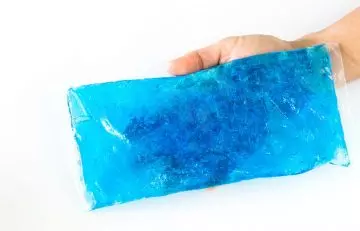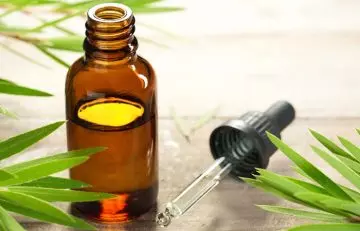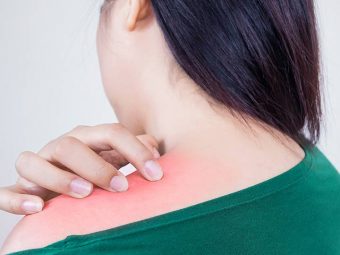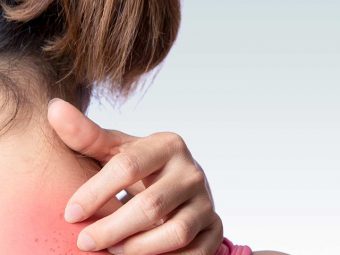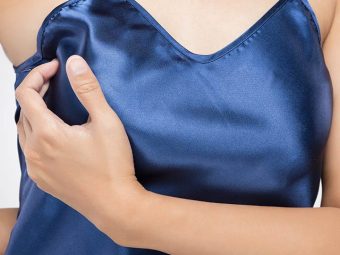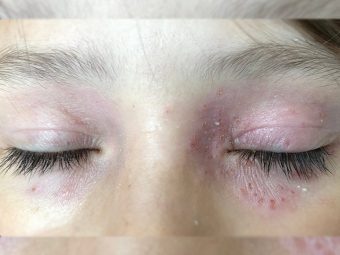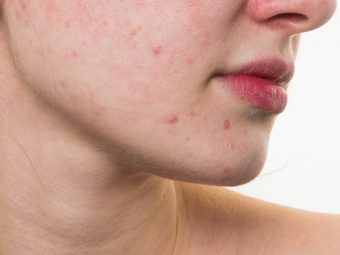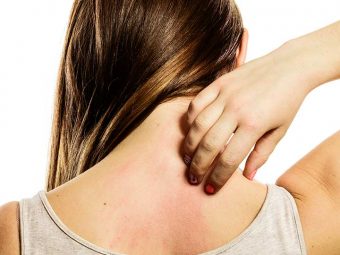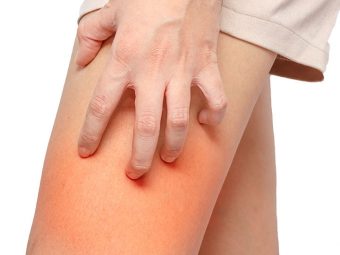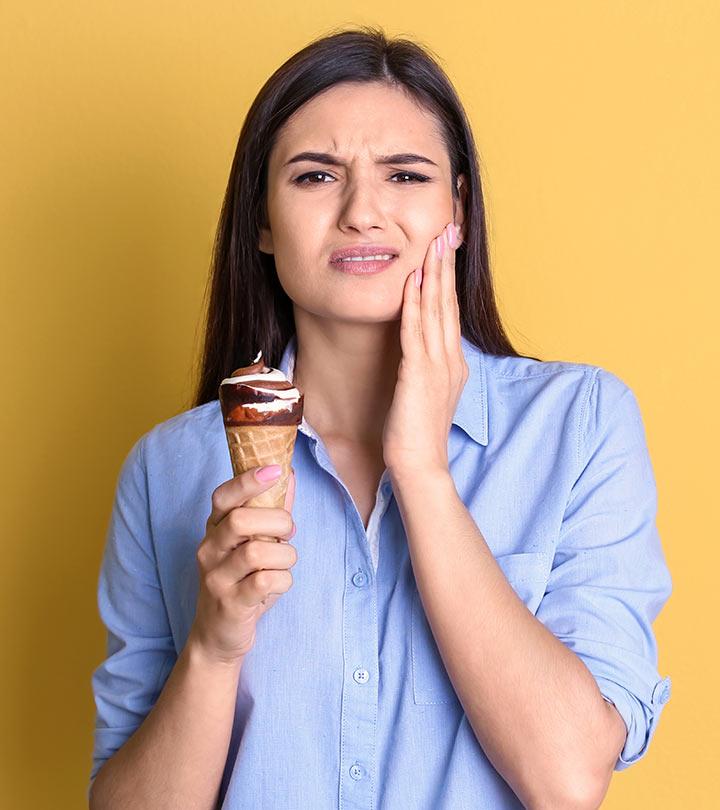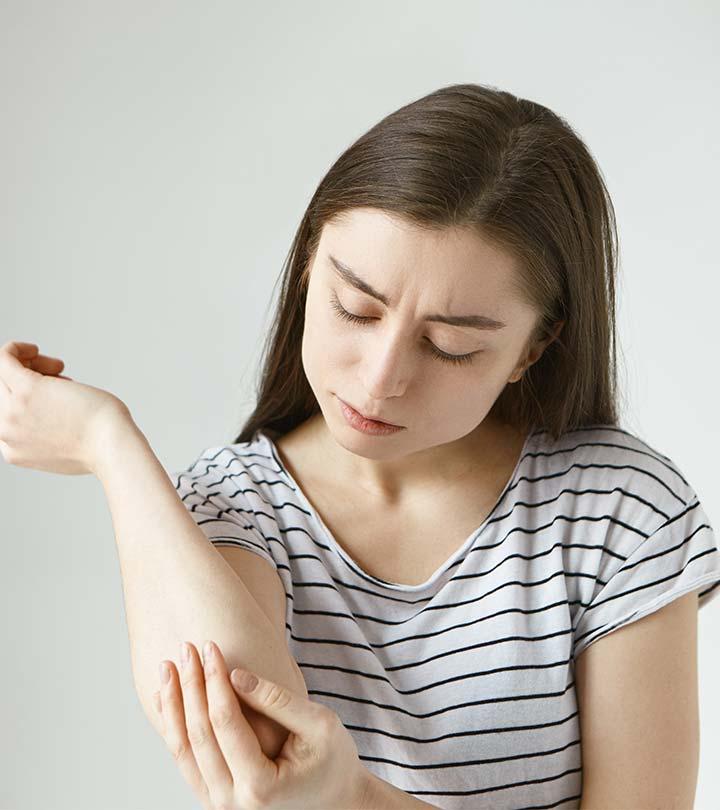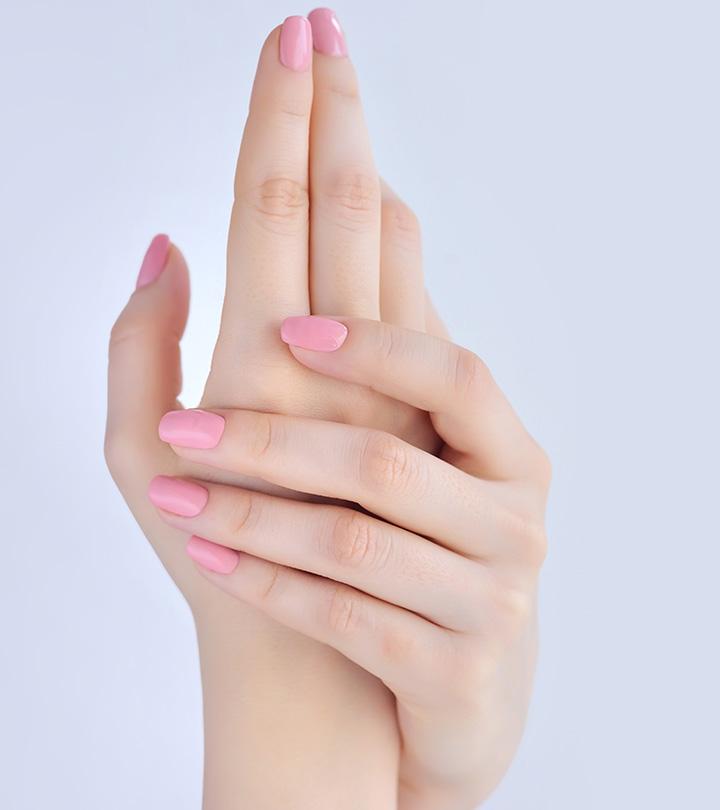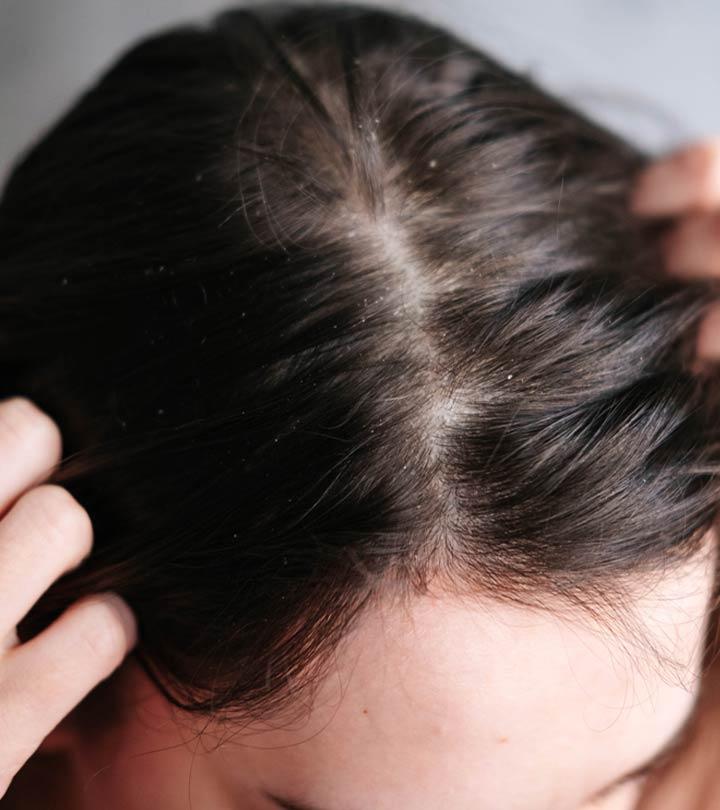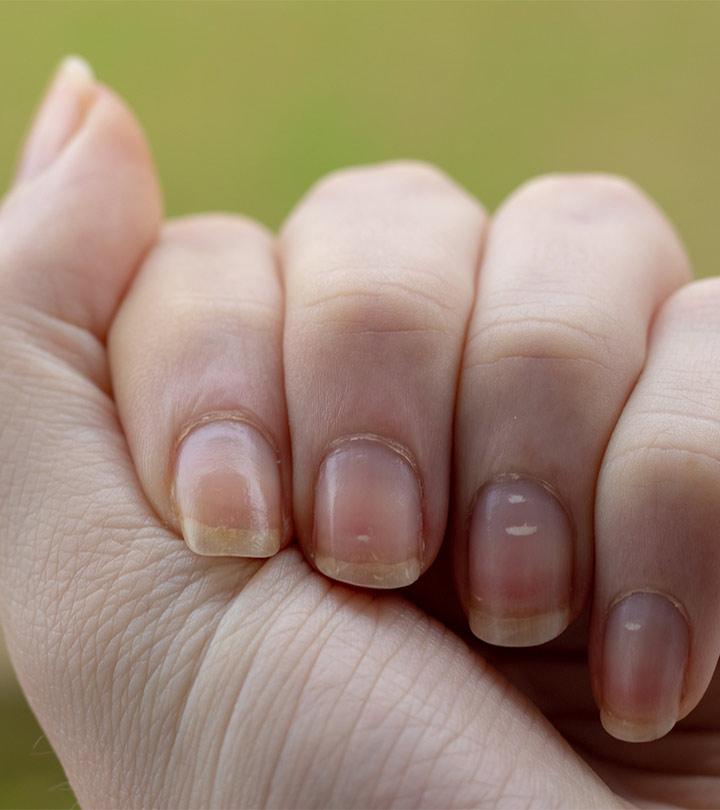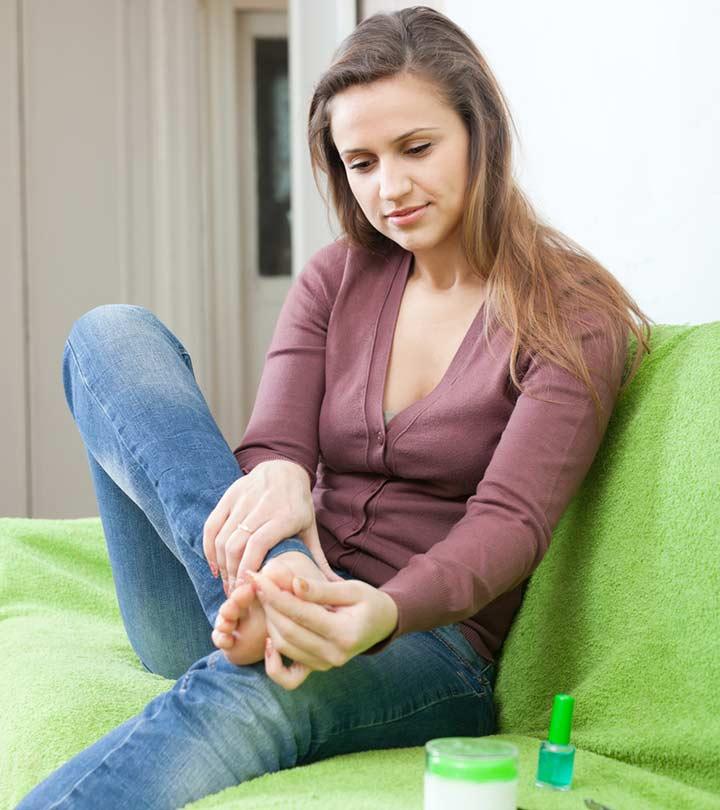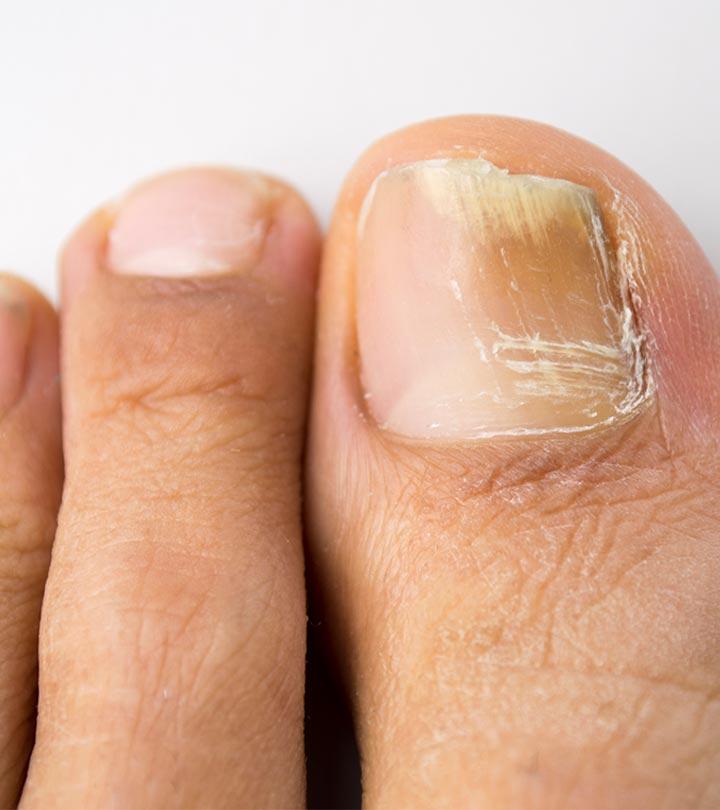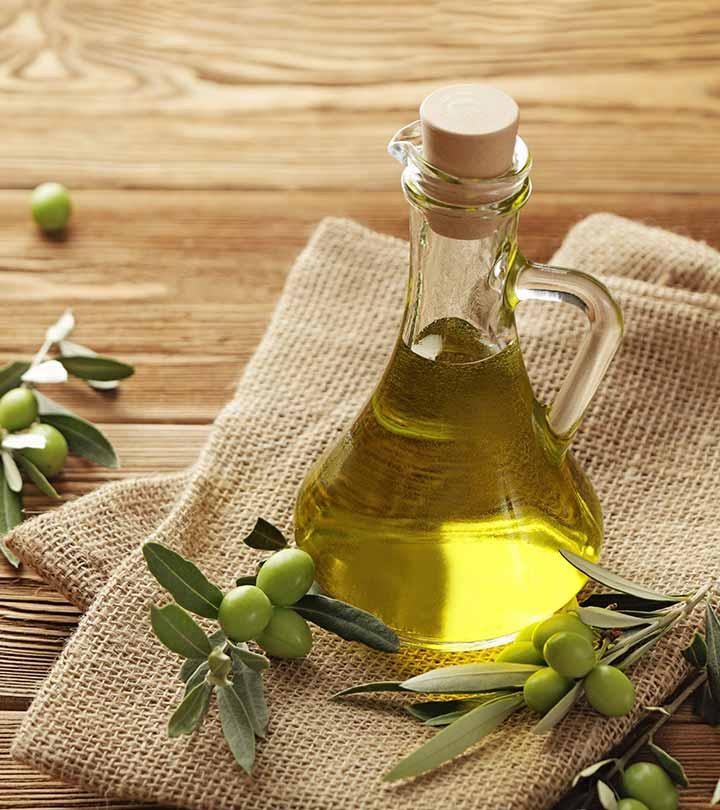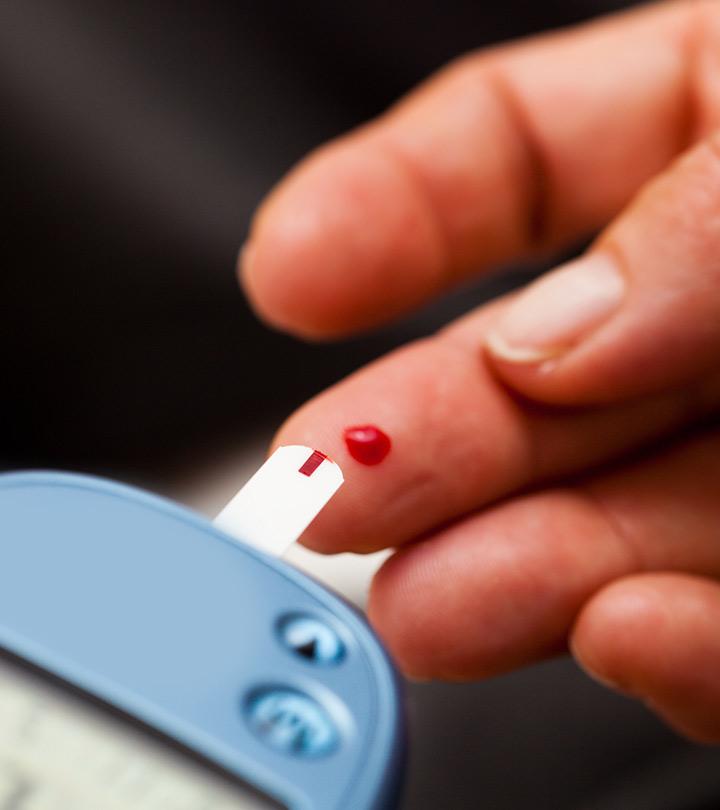Baby Heat Rash: What Is It, Causes, And How To Prevent It
Calm your child's irritated skin naturally with these hydrating ingredients.
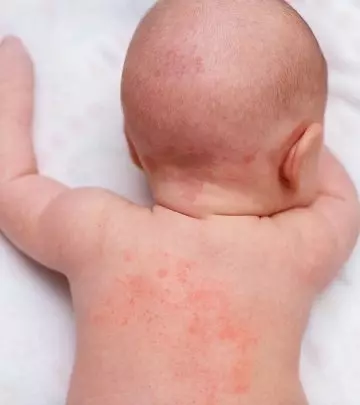
Image: Shutterstock
Heat rashes in infants are common and usually appear after the onset of summers. Getting rid of heat rash in the baby is a query and concern of many new parents.
The rashes usually lighten and disappear within a few days. However, they can be discomforting for the newborn. Topical applications may relieve the sensation to some extent. Additionally, you can always try out some safe remedies to ease the discomfort and promote healing. In this article, you will know more about heat rashes and natural remedies for heat rash treatment. Read on.
In This Article
What Is A Heat Rash?
Heat rash is one of the most common types of rashes. This skin condition is also referred to as miliaria, and it is often found to affect both children and adults alike when the climate turns hot and humid.
The clogging of pores is one of the main causes of heat rash. Friction on the skin’s surface can also trigger heat rashes. Babies often develop such skin rash on their neck. However, heat rash can also develop in other skin folds, such as the thighs, armpits, and elbows.
Jessica, a blogger, shared her concern for her baby, Garrett, who had a rash on his face, ears, and neck. The rash appeared to be more severe on the back of his neck and was diagnosed to be prickly heat rash. She writes, “ I was putting too much clothes on him and keeping him swaddled with a blanket and had a hat on him. His immature skin had pores that got clogged easily and he had very sensitive skin. His rash resolved within hours by keeping him out of clothes and keeping him cool and taking him into lukewarm baths with me (i).”
There are different types of heat rash that not only look different but also range in their severity and symptoms.
Types And Symptoms Of Heat Rash In Babies
There are three types of heat rash. They include:
- Miliaria crystallina: This is the most common and mildest kind of heat rash. This type is characterized by clear or white bumps on the skin that are filled with fluid. Such heat bumps often burst but do not pain or itch. This type of heat rash is much more common in babies than in adults.
- Miliaria rubra: This type of heat rash is also often referred to as prickly heat. It is more common in adults although children may also develop it. Miliaria rubra causes more discomfort as compared to miliaria crystallina as it often occurs deeper in the outer layer of the skin. The symptoms exhibited by this type of heat rash include:
- An itchy or prickly sensation in the affected area
- Red bumps on the skin
- Lack of sweating in the areas of the rash
- Inflamed and sore skin
In some instances, these bumps may also progress and become filled with pus. The doctors then refer to this rash as miliaria pustulosa.
- Miliaria profunda: This is the least common type of heat rash. It has high chances of recurrence and may take several weeks to heal. Miliaria profunda usually occurs in the dermis, which lies deeper in the skin. It typically occurs in adults and surfaces after a period of physical activity. This type of heat rash is characterized by large and tough, skin-colored boils. Since it prevents sweat from leaving the skin, it can also trigger symptoms of nausea and dizziness in the affected individuals.
Are you wondered what contributes to the development of such rashes in babies? Let’s find out.
What Causes Heat Rash In Babies?
As already mentioned, heat rash is a result of clogged skin pores that cannot expel sweat. Many factors can contribute to this. They include:
- A hot and humid climate
- Wearing clothing that traps heat
- Use of thick lotions and creams
- Overheating of the body due to multiple layers of clothing
Since babies have underdeveloped skin pores, they are more likely to develop a heat or sweat rash or diaper rash.
A cross-sectional study was conducted with 1791 full-time diaper-wearing babies from the USA, China, and Germany. As per the study, the prevalence of diaper rash in babies between 2 and 8 months of age was 1.3% in China, 8.7% in the USA, and 14.9% in Germany.
While heat rash usually eases away on its own, a few natural remedies can help speed up its healing without any side effects.
How To Treat Heat Rash In Babies Naturally
1. Cold Compress
You Will Need
A cold compress or ice pack
What You Have To Do
- Apply a cold compress or clean cloth dipped in cold water to the affected area.
- Leave it on for a minute and remove.
- Repeat a few times.
How Often You Should Do This
You can do this 2-3 times a day.
Why This Works
A cold compress can help in cooling and soothing the affected area. It relieves the symptoms of inflammation while also healing the rash faster.
2. Essential Oils
a. Tea Tree Oil
You Will Need
- 1 drop of tea tree oil
- 2-3 teaspoons of coconut oil
What You Have To Do
- Add a drop of tea tree oil to two to three teaspoons of coconut oil.
- Mix well and apply the blend to the affected area.
- Leave it on for 20-30 minutes.
- Rinse it off.
How Often You Should Do This
You can do this once daily until you notice an improvement in the symptoms.
Why This Works
Tea tree oil exhibits antiseptic and anti-inflammatory activities (1).
This graph from a 2022 study published in Molecules shows the disc diffusion activity of tea tree oil. TTO was found to be more effective against gram-negative bacteria than S. aureus in DD (disk diffusion) experiments. TTO’s in-vitro effectiveness in VP (vapor phase) assays was lower than that in DD analysis. However, TTO retained its activity against gram-negatives, particularly CR-Ab (Carbapenem-resistant Acinetobacter baumannii), which displayed 20 and 15-mm inhibition zones in DD and VP assays, respectively.
Disk Diffusion Activity Of TTO
Source: High Potency of Melaleuca alternifolia Essential Oil against Multi-Drug Resistant Gram-Negative Bacteria and Methicillin-Resistant Staphylococcus aureusIt can help in soothing the redness and discomfort associated with heat rash.
Caution
Do not include tea tree oil in baby skincare routines if the babies are younger than 6 months. Also, never use this oil undiluted.
b. Chamomile Oil
You Will Need
- 1 drop of chamomile oil
- 2-3 teaspoons of coconut oil
What You Have To Do
- Add a drop of chamomile oil to two to three teaspoons of coconut oil.
- Mix well and apply it topically to the affected area.
- Leave it on for 20-30 minutes before rinsing it off.
How Often You Should Do This
You can do this once daily for best results.
Why This Works
Like tea tree oil, chamomile oil also possesses anti-inflammatory properties (2). These properties can help to provide relief by soothing the symptoms associated with heat rash.
Caution
Do not use this oil undiluted and on children below 6 months of age.
3. Cucumber
You Will Need
Sliced cucumber
What You Have To Do
- Take a cucumber and slice it.
- Grind the slices to form a thick paste.
- Apply the cucumber paste to the affected area.
- Leave it on for 5-10 minutes and then wash it off.
How Often You Should Do This
You can do this 2-3 times daily.
Why This Works
Cucumber contains flavonoids and tannins that exhibit analgesic and anti-inflammatory properties (3). These properties may help in calming heat rash in babies.
4. Oatmeal
You Will Need
- 1 cup of powdered oatmeal
- Water
What You Have To Do
- Fill a basin or your baby’s bathtub with water.
- Add a cup of powdered oatmeal to it and mix well.
- Soak your baby in the oatmeal bath for 10-15 minutes.
- Pat dry their skin.
How Often You Should Do This
You can do this once daily.
Why This Works
The anti-inflammatory nature of oatmeal plays a significant role in treating many skin disorders (4). It can also help soothe the heat rash and speed up its healing.
5. Fuller’s Earth
You Will Need
- ½ tablespoon of Fuller’s earth
- Water (as required)
What You Have To Do
- Mix half a tablespoon of Fuller’s earth with water to form a paste.
- Apply it all over the affected area.
- Leave it on for 10 minutes.
- Rinse off with water.
How Often You Should Do This
You may do this once every 2 or 3 days.
Why This Works
While there are no studies to back this claim, anecdotal evidence suggests that Fuller’s earth can help soothe heat rash in babies as well as adults.
6. Aloe Vera
You Will Need
Freshly extracted aloe vera gel
What You Have To Do
- Take some freshly extracted aloe gel and apply it to the affected area.
- Leave it on for 10-15 minutes.
- Rinse it off with water.
How Often You Should Do This
You may do this once daily for best results.
Why This Works
Aloe vera gel extracts exhibit anti-inflammatory activities that can help soothe the heat rash and improve its symptoms (5).
 Quick Tip
Quick TipIf the above remedies fail to provide relief, you can try the treatments listed below to manage baby heat rash.
Treatment For Heat Rashes In Toddlers
Here are various ways to treat heat rashes in babies. However, consult a pediatrician first. They may recommend the following treatment options (6):
- Calamine lotion
- Over-the-counter corticosteroids
- Antihistamines
Usually heat rashes in babies resolve on their own within a week. If the rashes do not heal within that time period and appear inflamed, consult a doctor immediately.
Other than these treatment methods, you may also give your child cool baths. However, ensure to use mild, fragrance-free baby products to soothe their skin. Loosening the dapper also helps prevent friction and minimize irritation. You may trim your child’s nails to prevent them from scratching the heat rash.
In addition to these remedies, here are some useful tips that can help prevent the recurrence of heat rashes in your baby.
How To Prevent Heat Rash In Babies
- Protect your baby and keep them away from the scorching sun.
- Keep your baby indoors and in air-conditioned rooms, especially during summers.
- Dress your little one in breathable and loose clothing, especially in summers.
- Wash areas like your baby’s neck, armpits, and groin with cool water. Pat these areas dry after washing.
- Check the temperature of your child’s skin every now and then. Apply a cold compress or give them a quick bath if you notice an increase in the temperature.
- Avoid using thick lotions and creams on your little one.
- Use a mild soap that doesn’t leave your child’s skin too dry.
 Quick Tip
Quick TipInfographic: Top 4 Ways To Treat A Heat Rash In Babies
When it comes to your baby, you cannot take risks. Trial and error to know which remedy works the best is never a good option. So, we have listed the top four effective and safe ways to treat baby heat rashes at home. Check out the infographic below to learn more.
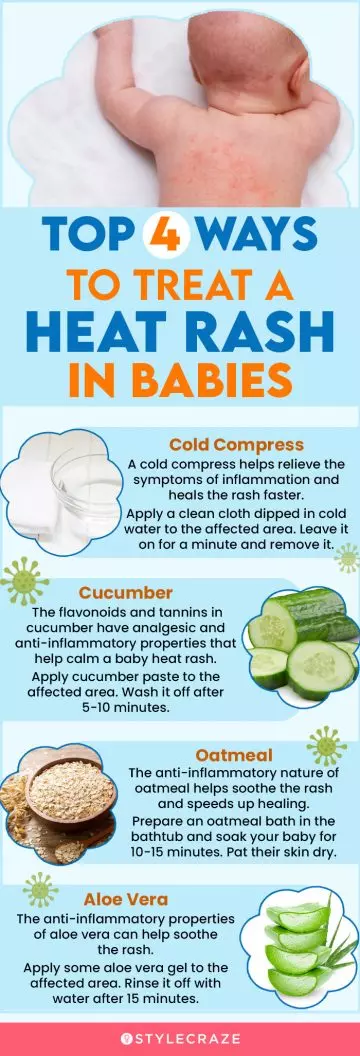
Illustration: StyleCraze Design Team
Heat rash in babies occurs mainly due to higher body temperatures. Tight clothes, excess body heat, and friction are the other causes of a heat rash in babies. However, you can get rid of heat rash in babies with some effective remedies. Using cold compress, essential oils like tea tree and chamomile oils, cucumber, oatmeal, and Fuller’s earth may improve these conditions. These natural ingredients exhibit anti-inflammatory properties and help soothe the rashes. In addition, protecting your baby from the sun, avoiding thick lotions, and using a mild soap may prevent heat rashes.
Frequently Asked Questions
When should I worry about baby heat rash?
If your baby’s rash lasts for more than three days or is paired with an infection, fever, or swelling, you should consult a doctor immediately.
What can be mistaken for heat rash?
In children, eczema is commonly mistaken for heat rash due to their similar signs and symptoms.
Does breast milk help heat rash?
Breast milk may help soothe skin irritation associated with heat rashes.
Is baby powder good for heat rash?
It is not recommended to use baby powder if your child has heat rash as it can dry out the skin.
Is Vaseline good for heat rash?
Yes. Vaseline can moisturize the skin and soothe the irritation caused by heat rashes.
Key Takeaways
- Heat rashes, also called miliaria, are experienced by both children and adults during hot and humid seasons.
- Miliaria crystallina, miliaria rubra, miliaria profunda are the various types of heat rash.
- Cold compress, essential oils, chamomile oil, cucumber, and oatmeal are natural remedies for heat rash.
Curious about prickly heat rash? Explore the causes behind this pesky skin condition in this video. Check it out to gain valuable knowledge to prevent and soothe the discomfort caused by this common summer ailment.
Personal Experience: Source
StyleCraze's articles are interwoven with authentic personal narratives that provide depth and resonance to our content. Below are the sources of the personal accounts referenced in this article.
i. Prickly heat rash?,https://journeytocrunchville.wordpress.com/2008/09/06/prickly-heat-rash/
References
Articles on StyleCraze are backed by verified information from peer-reviewed and academic research papers, reputed organizations, research institutions, and medical associations to ensure accuracy and relevance. Read our editorial policy to learn more.
- “Melaleuca alternifolia (Tea Tree) Oil: a Review of Antimicrobial and Other Medicinal Properties” Clinical Microbiology Reviews, US National Library of Medicine.
- “Chamomile, an anti-inflammatory agent inhibits inducible nitric oxide synthase expression by blocking RelA/p65 activity” International Journal Of Molecular Medicine, US National Library of Medicine.
- “Free Radical Scavenging and Analgesic Activities of Cucumis sativus L. Fruit Extract” Journal Of Young Pharmacists, US National Library of Medicine.
- “Oatmeal in dermatology: a brief review.” Indian Journal of Dermatology, Venereology and Leprology, US National Library of Medicine.
- “Antiinflammatory activity of extracts from Aloe vera gel.” Journal of Ethnopharmacology, US National Library of Medicine.
- “Miliaria.” StatPearls, US National Library of Medicine.





